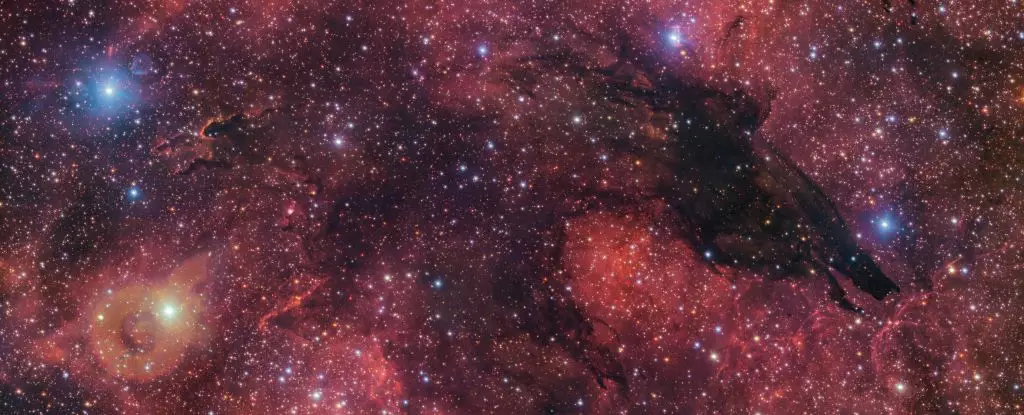In the vast tapestry of the cosmos, dark nebulae stand as enigmatic forms, often misunderstood as voids or deathbeds of stars. One such nebula, aptly named the Dark Wolf Nebula, is located an impressive 5,300 light-years away from our planet. Despite its menacing title and its seemingly empty visage, this nebula is a cradle of creation rather than destruction. The term ‘dark nebula’ refers to regions in space where dust and gas are so dense that not even the faintest photons can penetrate. Instead of being barren, these areas are rich with the building blocks required for star formation, demonstrating that the universe is capable of magnificent births even in the darkest corners.
In mythology, particularly within Norse legends, the end of the world is a grand spectacle depicting cosmic battles and the inevitable cycle of death and rebirth. The Prose Edda speaks of Sköll, the wolf destined to eat the Sun during Ragnarök, which metaphorically connects to the way dark nebulae like the Dark Wolf are constantly caught in a cycle of destruction and creation. Just as the vastly more luminous stars eventually die in supernovae, these nebulae sow the very seeds of new stars. Such parallels between old stories and modern astronomy remind us of how deeply intertwined our interpretation of the cosmos is with history and culture.
The Science Behind Star Birth
The composition of dark nebulae is critical to understanding how stars are born. Consisting of gas and dust, these dense clouds create environments where gravity reigns supreme. Under normal circumstances, the pressure from heat counteracts the pull of gravity, maintaining a delicate equilibrium. However, within these dark clouds, thermal energy dissipates, causing them to cool and allowing gravity to take control. The result is a dramatic transformation where clumps of matter begin to coalesce. These gravitationally influenced regions, often referred to as dense cores, become the nascent stars.
As these cores accumulate surrounding material, they heat up through gravitational compression, eventually reaching temperatures and pressures sufficient to ignite nuclear fusion. This process not only marks the birth of a new star but also sets off a chain reaction that influences the surrounding environment. Born in darkness, these stars will later expel surrounding material through intense radiation and stellar winds, signaling the end of their early formation stage. The duality of a nebula as both a womb and tomb encapsulates the perpetual cycle of cosmic life.
The Instruments of Cosmic Insight
Studying the intricate processes hidden within dark nebulae presents unique challenges to astronomers. While visible light observations can capture various characteristics of these clouds, they often fail to penetrate their dense structure. This is where infrared astronomy becomes indispensable. Instruments such as the James Webb Space Telescope (JWST) are specifically designed to detect infrared wavelengths capable of piercing through thick clouds of dust, allowing scientists to peer into the heart of these star-forming regions.
Through a combination of imaging across the electromagnetic spectrum—spanning from radio waves to visible light and into the infrared—astronomers can create a more holistic understanding of these cosmic phenomena. Detailed observational data leads to a deeper comprehension of the dynamics at play in nebulae, as they transition from cold, dark enclosures to radiant sources of light and energy in the universe.
The Dark Wolf Nebula forces us to confront the paradox of nature. It thrives in darkness yet births brilliant stars capable of altering the fabric of the cosmos. As we continue to explore and study these celestial phenomena, we not only learn about the mechanics of star formation but also reflect on the larger existential questions they pose. Legacies of destruction and depictions of rebirth echo across both mythology and modern astronomy, illustrating that within the endless expanse of the universe, darkness is not merely an absence of light but a precursor to creation. Thus, while Sköll may devour the sun at the world’s end, dark nebulae will always persist, nurturing the universe’s future stars amidst their shadowy veils.


Leave a Reply